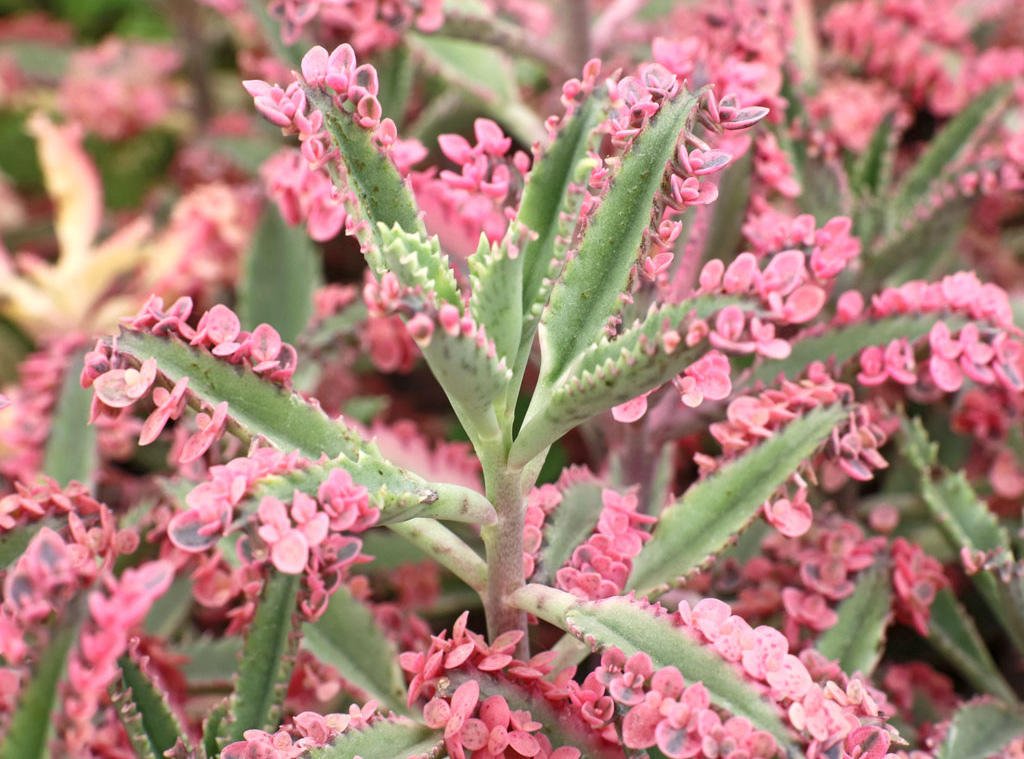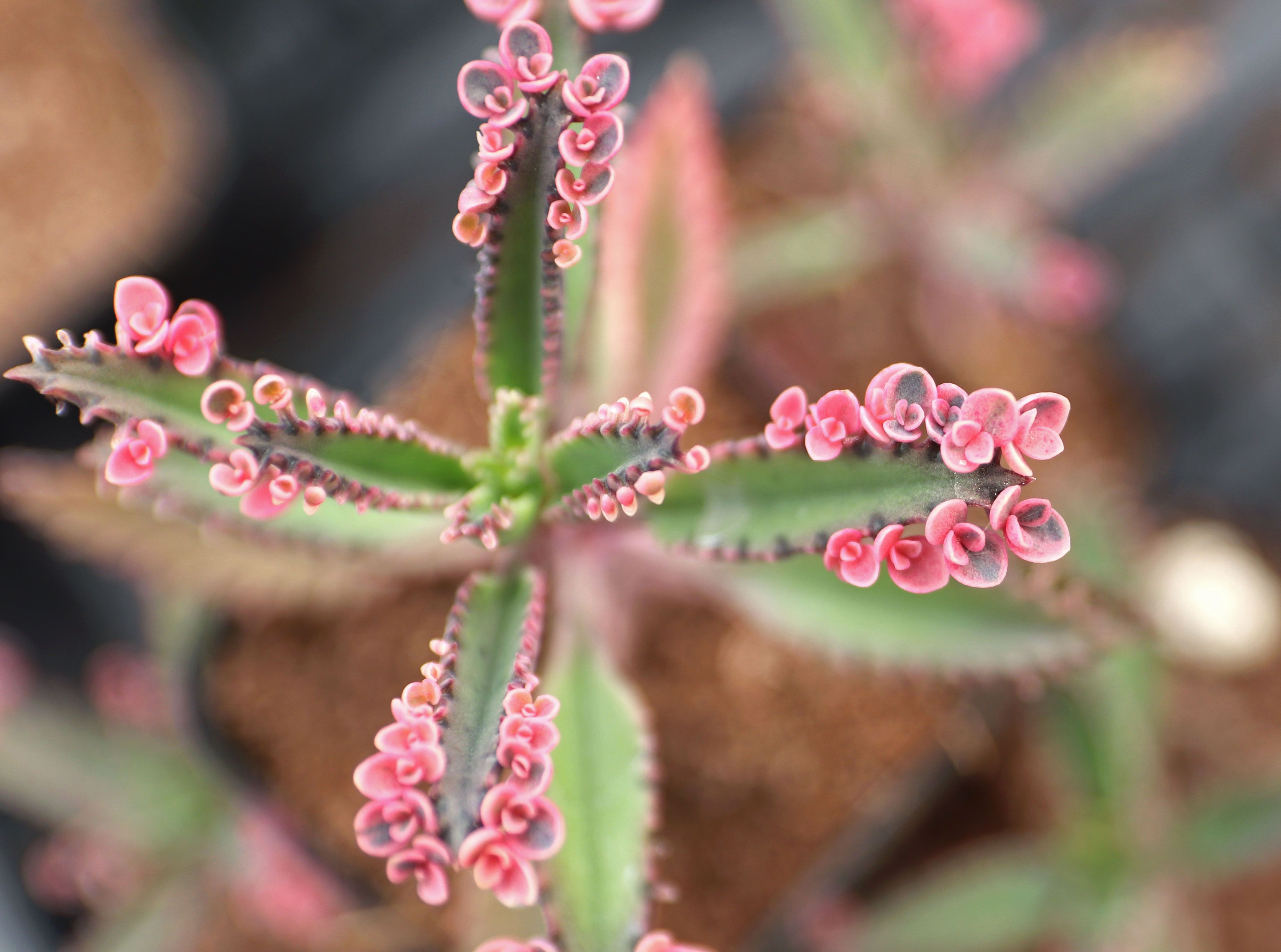Care Guides
Kalanchoe 'Pink Butterflies': Care Tips & Where to Buy
Kalanchoe 'Pink Butterflies' is a unique, pink plant that is a fun oddity and a must-have in any succulent collection.
What makes it so special? This phenomenal plant is a variegated sport, meaning it's low on chlorophyll. Without green chlorophyll, astounding, bright pink pigments can shine through.
It is a variegated form of the cross K. delagoensis x K. daigremontiana, also known as K. x houghtonii. It grows tall stems and long, slender leaves. These "Mother of Thousands" plants grow hundreds of new plantlets or "bulbils" along their leaf edges. Each plantlet can fall off and propagate, re-rooting into a whole new plant!
For 'Pink Butterflies', it is these small plantlets that show variegation. With their tiny leaves and pink pigments, they truly resemble a kaleidoscope of butterflies (that's the official term!).
Pink Butterflies certainly isn't one of the easiest succulents to grow. The butterflies themselves are fragile, finicky growers. But with a couple key tips, you can grow your very own, Kalanchoe 'Pink Butterflies'!
How to Care for 'Pink Butterflies'
Sunlight
Like other variegated plants, 'Pink Butterflies' needs a little extra light. In frost-free weather, it is quite happy outdoors in partial sun. For indoor growing, be sure to keep it on a sunny window sill. South- and west-facing sills work best in the Northern Hemisphere.
This plant also thrives under full spectrum grow lights. We recommend reading the Full Guide to Succulent Grow Lights to perfect your setup.
Water
As with other succulents, Kalanchoe need deep but infrequent water. They can handle a good, thorough drenching. That means no misting here! Just be sure to only water when the soil is completely dry.
Succulents are well-adapted to drought and recover easily from underwatering. Overwatering, however, quickly leads to rot and eventually death.
Soil
Gritty is good when it comes to succulent soil. 'Pink Butterflies' love a light, well-draining soil with lots of mineral grit. You can find a gritty cactus and succulent soil (or several) at most garden centers.
For a deep dive on succulent soil, you need to read The Ultimate Guide to Succulent Soil.
Containers
Since we're using a well-draining soil, it's imperative to also pick a container with a hole in the bottom. This will help you see that you’ve watered deeply enough, because water will run out the bottom of the pot. It also makes the soil dry out faster and prevents rot. All around, the best, easiest option for succulent cultivation.
Have a non-draining pot you really want to use? Use a diamond bit to drill a hole in the bottom. If you're a succulent master and very careful waterer, you can get away with a non-draining container. But don't say we didn’t warn ya.
Propagation
There are two ways to propagate 'Pink Butterflies': a fun, simple way and a more complicated method.
The fun, simple way is to let the plant do all the work. Whenever one of the butterflies falls off, it has the potential to grow roots and become its own plant. You'll want to ensure it has space, sun, and regular moisture. When the plantlet is about 1.0" tall, you can gently transplant it into a separate container.
The slightly more complicated, but a bit more reliable method is to take stem cuttings. Using sharp, clean scissors, cut off the top 2.0"+ section of stem. Let the cut dry for 2-3 days, then plant the stem in a new pot. Water deeply and the cutting can grow new roots.
In 2-4 weeks, a gentle tug will tell you if your new plant established roots. For more details on this method, head over to the Visual Guide to Succulent Cuttings.



